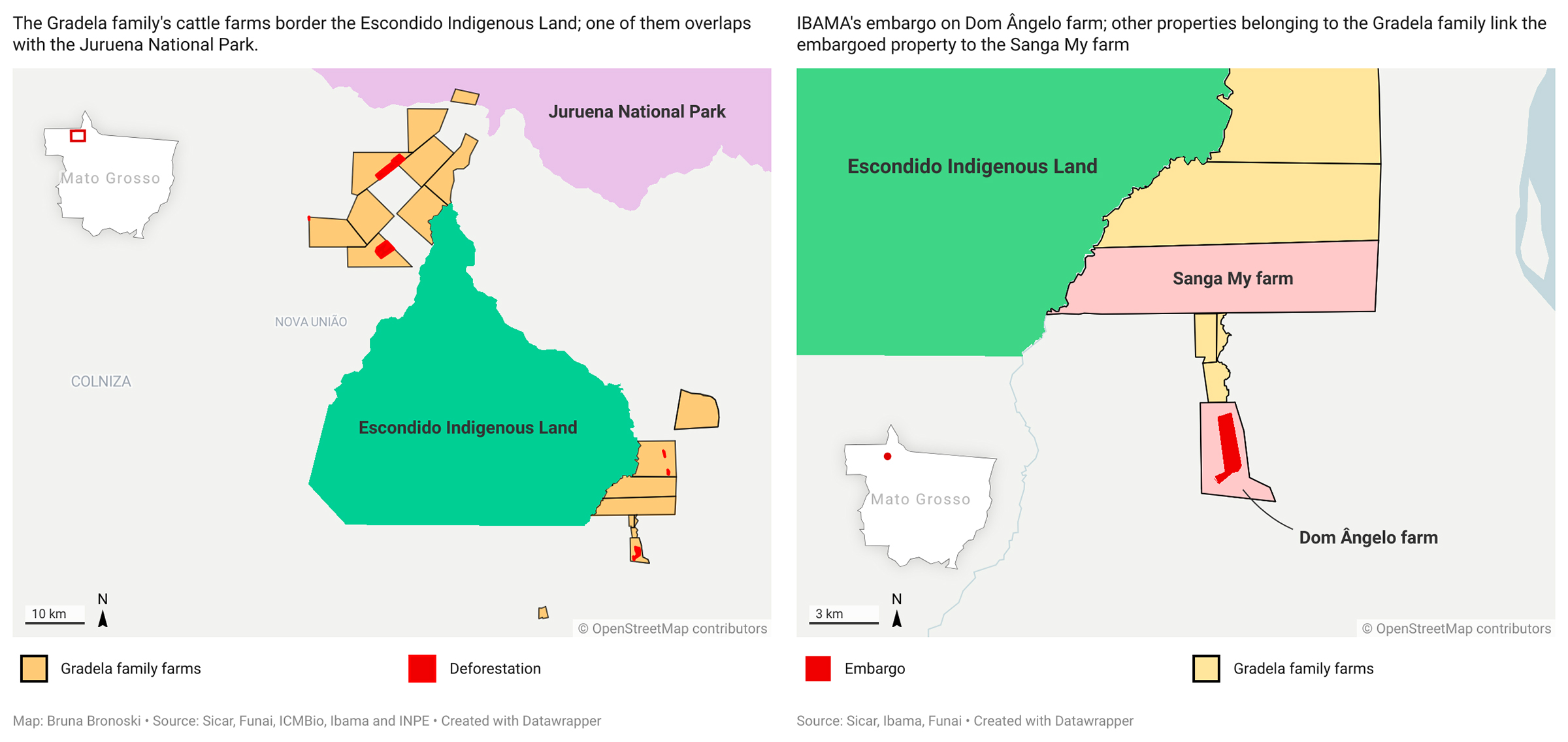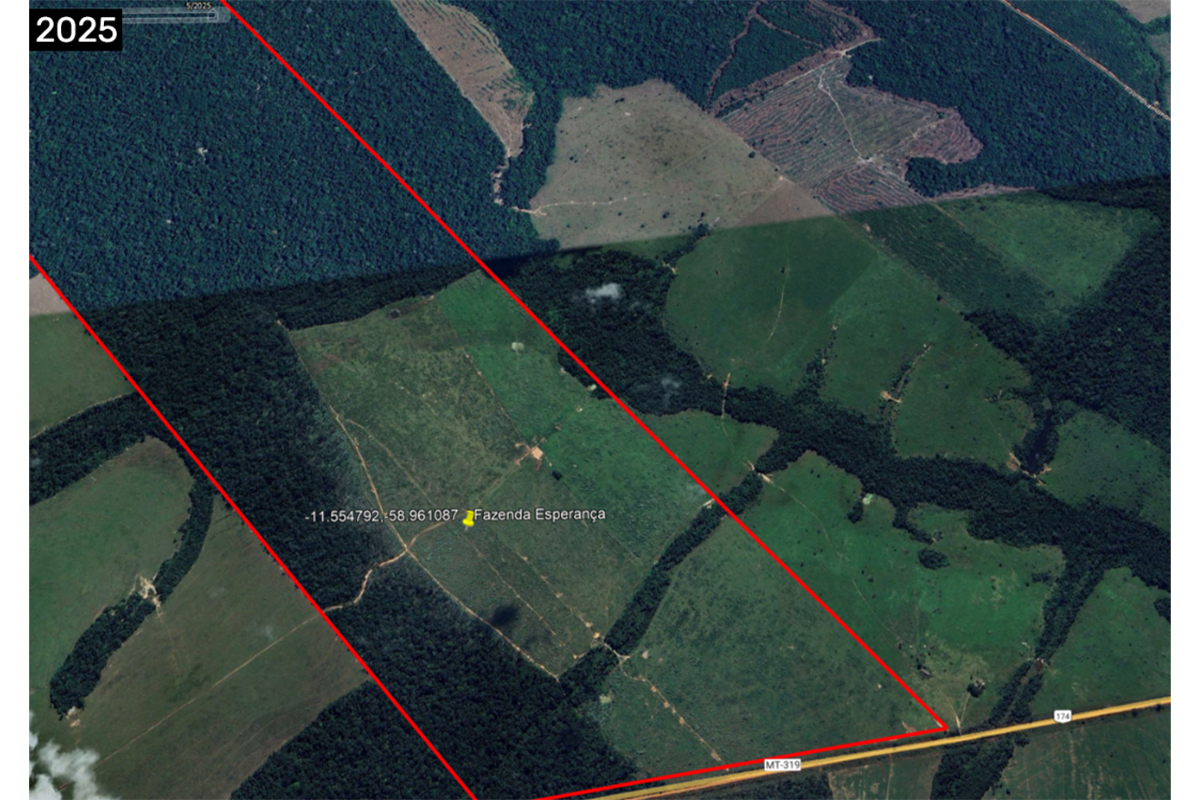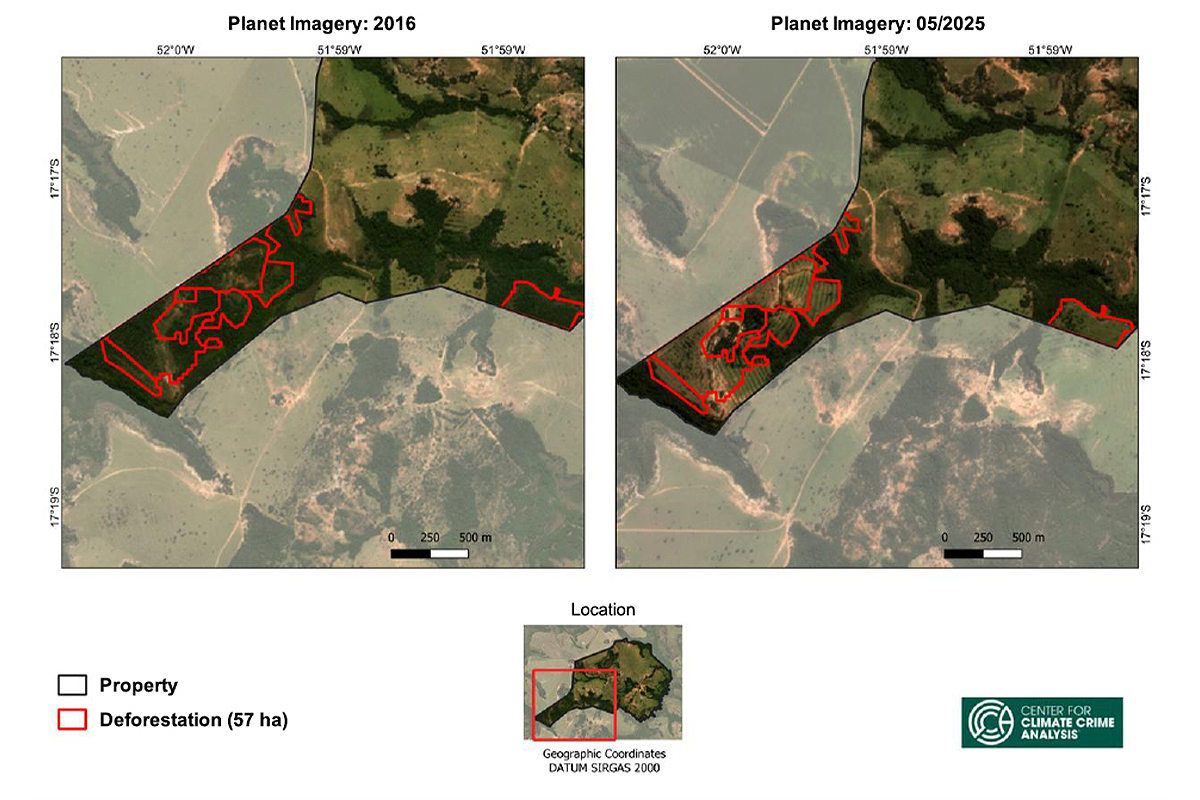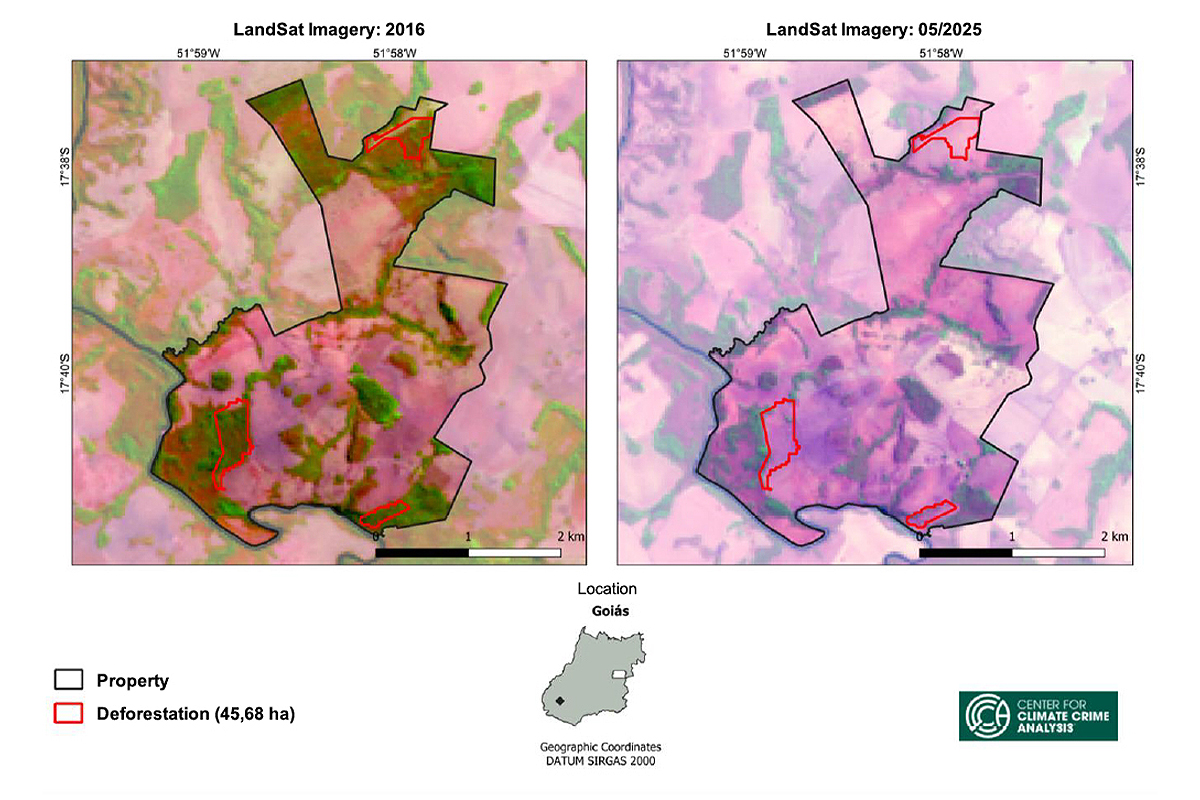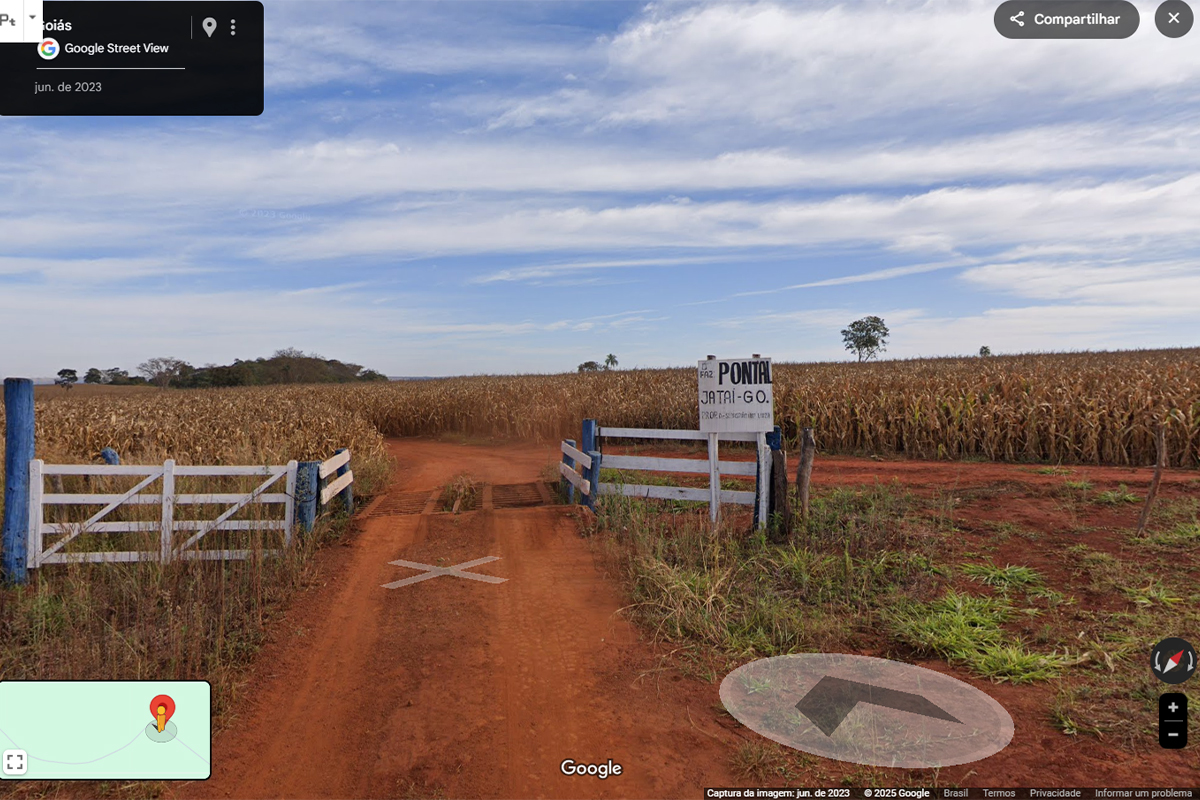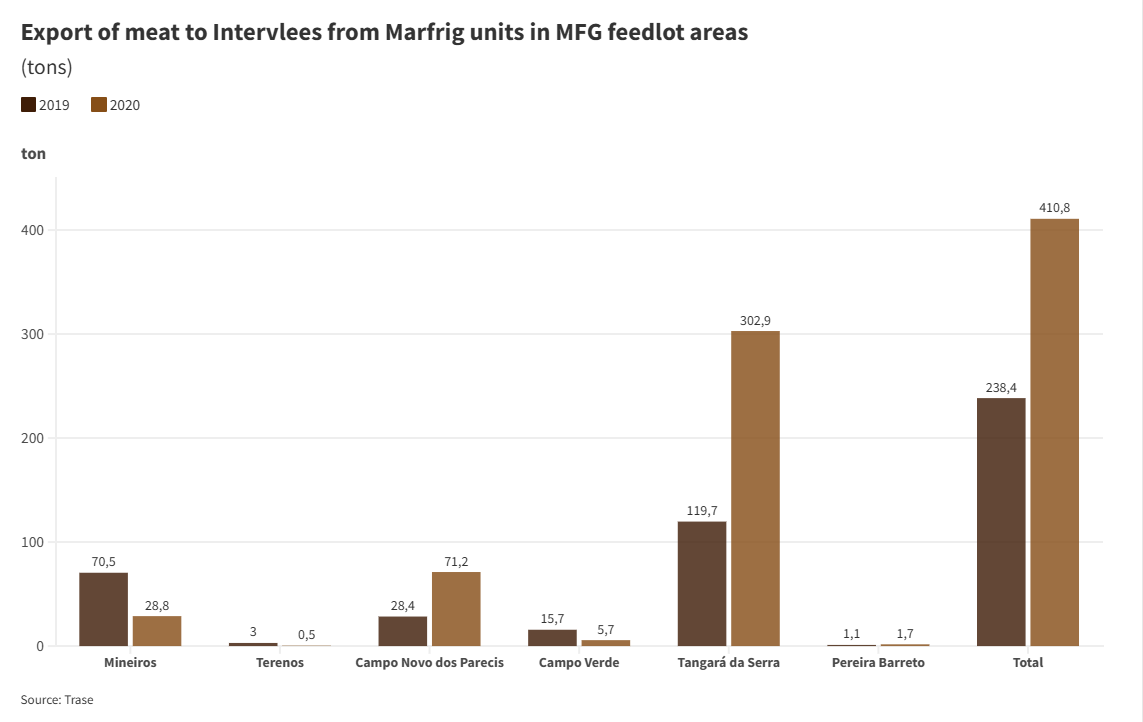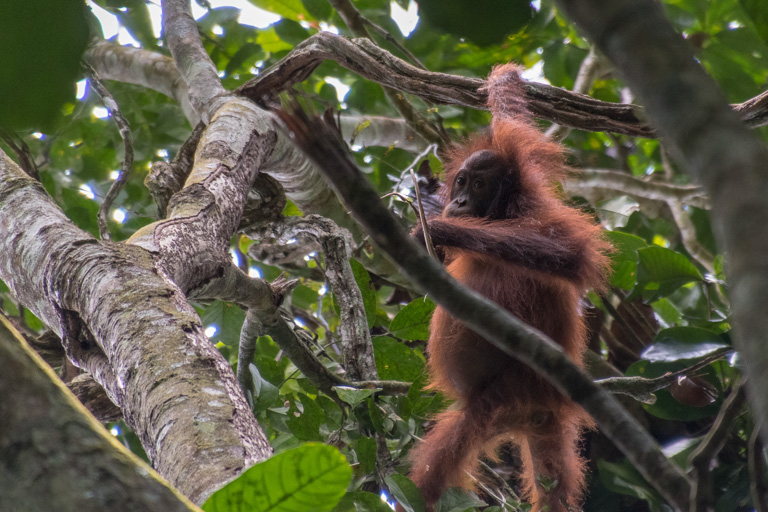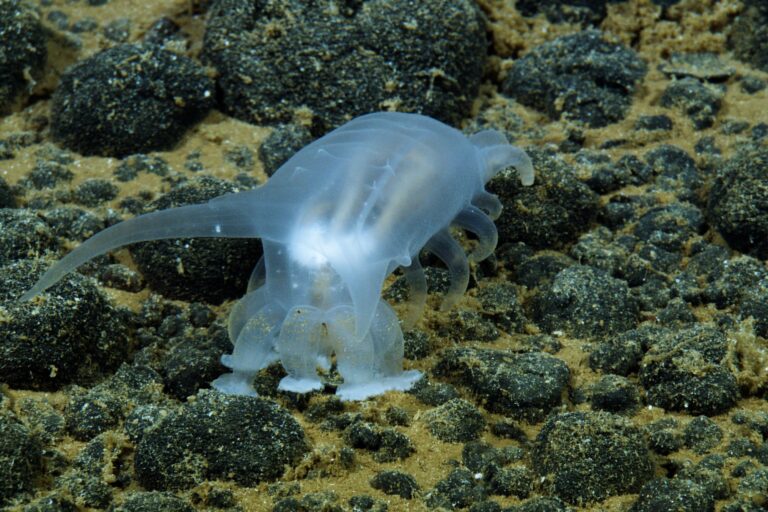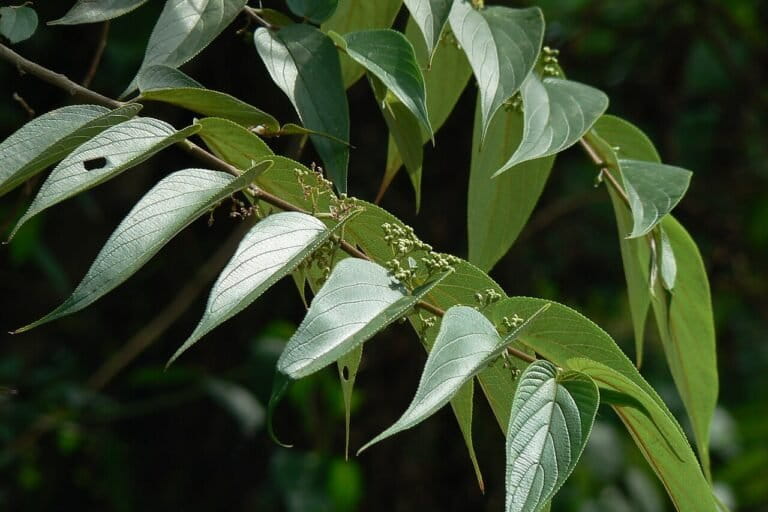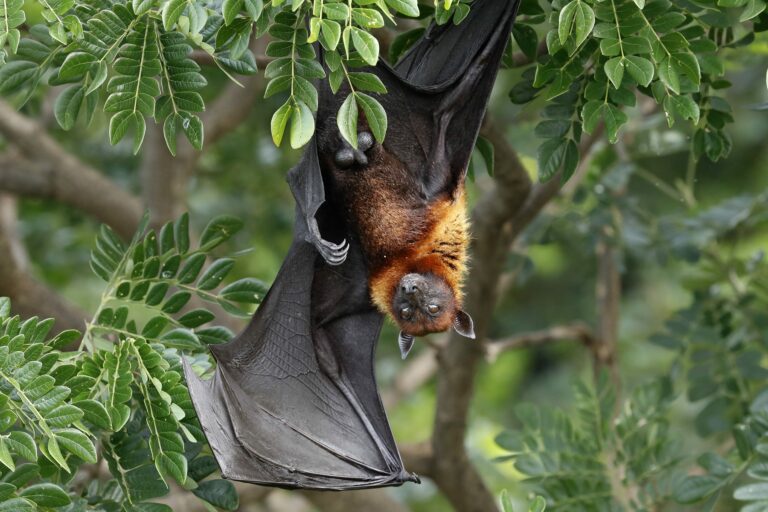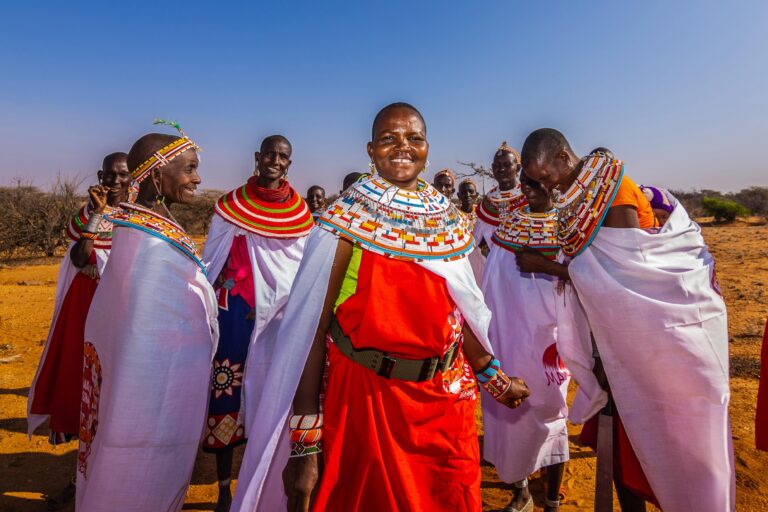- An investigation has found that half of the $2 billion Marfrig raised went to buying cattle raised on deforested land and fattened in feedlots linked to its board chair.
- Marfrig’s claims to track nearly 90% of its indirect suppliers in the Amazon contain blind spots, enabling ranchers from illegally deforested areas to rig the supply chain through paperwork.
- With new regulations like the EU Deforestation Regulation demanding full traceability, the Brazilian cattle industry faces increasing pressure to identify herds and meet stricter environmental requirements for global markets.
Leia em português.
Brazilian meatpacking giant Marfrig spent $1 billion from bonds it issued to buy cattle from a ranch linked to its board chair — with some of that cattle originating from illegally deforested areas of the Amazon and Cerrado, an investigation has found.
Marfrig Global Foods SA, which bills itself as the world’s largest hamburger producer, has raised 11 billion reais ($2 billion) since 2019 from issuing a type of corporate bond known in Brazil as an agribusiness receivables certificate (CRA).
Half of that amount — 5.5 billion reais, or $1 billion — was used exclusively to purchase cattle from feedlots run by MFG Agropecuária, whose managing partner is Marfrig’s board chairman, Marcos Antonio Molina dos Santos. Bondholders include individual investors, buying through brokerage apps or indirectly via financial operators.
Part of the money went toward buying cattle originating from illegally deforested areas of the Amazon Rainforest and Cerrado savanna, according to an investigation by Joio e o Trigo (republished by Mongabay), in partnership with the Center for Climate Crime Analysis (CCCA), a nonprofit organization that supports global climate action.
MFG, indicated in CRA documents as the rural producer receiving the proceeds of the bond issuance, purchases cattle from other suppliers, known as indirect suppliers. The last of these bonds matures in 2032.
According to a 2024 public document Marfrig shared with investors, 100% of cattle purchased by the six MFG feedlots are sold to Marfrig slaughterhouses. MFG has been a wholly owned Marfrig subsidiary since 2014.
The CRAs — debt that the company takes on with the promise of repayment with interest by the maturity date — were structured by securitization companies Ecoagro, the largest agribusiness securities issuer, and Opea. According to the mandatory CRA documents, seven of these issuances — from both Ecoagro and Opea — served to purchase cattle from MFG, which calls itself “Brazil’s largest feedlot.”
MFG’s feedlots in the municipalities of Mineiros, Terenos, Campo Novo do Parecis, Campo Verde, Tangará da Serra and Pereira Barreto specialize in fattening of beef cattle, the final stage before the animals are shipped off to Marfrig’s slaughterhouses. Among MFG’s cattle suppliers are ranchers who have illegally deforested areas in the Amazon and the Cerrado regions and were charged with falsifying land ownership documents. Some have also been leading environmental degradation bordering Indigenous lands.
Fazenda Gera, a ranch located in Campo Novo do Parecis, in Mato Grosso state, is one of MFG’s three main animal-receiving centers. It has a static capacity to confine up to 26,000 animals. Despite receiving herds from properties with known socioenvironmental irregularities, Gera remains on the Brazilian Ministry of Agriculture and Livestock’s list of farms authorized to export to the European Union in 2025.
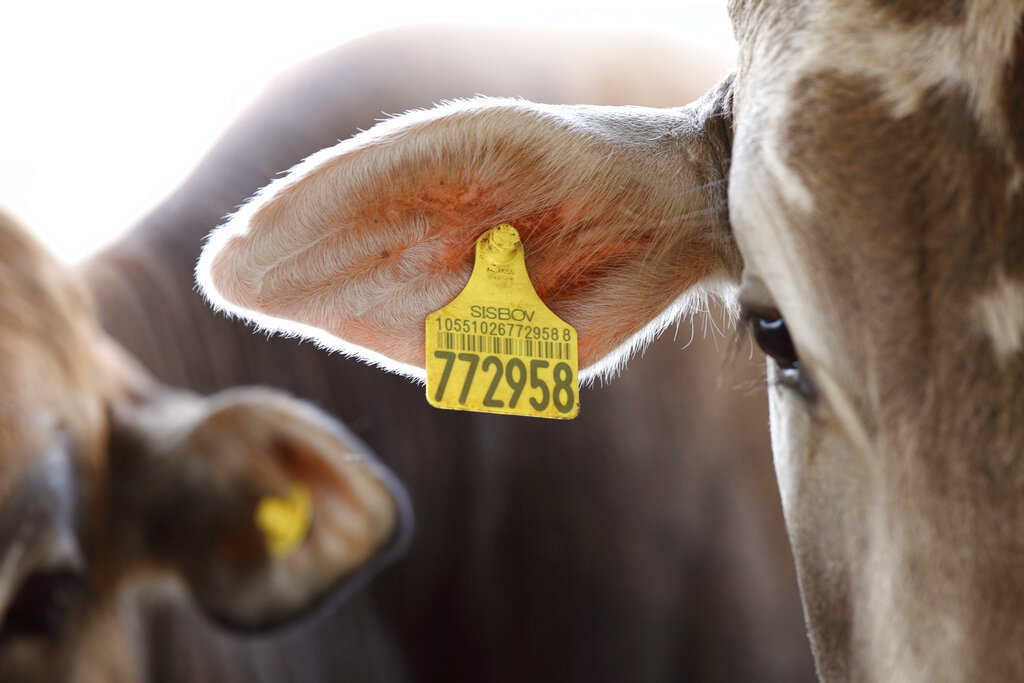
MFG’s two other feedlots are just as large: the Flores farm, in Mineiros, Goiás state, and Bonança, in Pereira Barreto, São Paulo state. These properties receive cattle from ranches in the Cerrado, a biome that’s highly threatened by agribusiness expansion.
At the other end of the supply chain, our investigation reveals that meat processed in Marfrig units where cattle of MFG origin are slaughtered is sent to European countries, and distributed to wholesalers such as Belgium’s Intervlees NV and Britain’s GPS Food Group UK Ltd.
Marfrig is in full leveraging mode, a financial market term meaning boosting investment capacity: structuring increasingly longer debts — where CRA issuances come in — and expanding operations with attempts to incorporate other sector brands, such as BRF, which processes chicken and pork.
Marcos Molina declared in Marfrig’s 2024 financial statements that “in the ESG pillar [environmental, social and governance], Marfrig continues to be recognized and leads the main sustainability rankings, standing out as the best-evaluated company in its segment.”
In 2019, the company decided to issue so-called green bonds, that is, taking on debt to fund supposedly environmental goals. When developing guidelines for this issuance, Marfrig declared the goal of tracking 100% of its indirect suppliers — those that don’t sell directly to the company but to direct suppliers like MFG — by 2025, and applying a request form of information (RFI) for ranchers from whom it buys directly.
In 2024, the company reaffirmed its public goal of covering 100% of its indirect supplier chain by 2025, declaring it had tracked “88.8% of indirect suppliers in the Amazon and 79.6% in the Cerrado.”
In response to our questions, MFG and Marfrig denied any wrongdoing.
Origin: Deforested Amazon
One example of failures in Marfrig’s tracking chain is in Cotriguaçu municipality, Mato Grosso state. There, 20 farms make up the Fabris Gradela family conglomerate. Some of the areas they cover have suffered constant deforestation since 2008. In that time, 2,695 hectares (6,659 acres) have been devastated by clear-cutting, which leaves the soil completely exposed or with little remaining vegetation.
From 2019 onward, when Marfrig was issuing its CRAs, 1,656.4 hectares (4,093 acres) were deforested on Fabris Gradela properties. According to the securitization terms consulted by the investigation, funds raised from the issuance were used to buy cattle from MFG, the company to which the Gradela family sells some of its cattle.
One of the farms that supplied MFG in 2024 is Sanga My, a 3,766-hectare (9,307-acre) area that sits on the western border of the Escondido Indigenous Territory, a protected area of 169,000 hectares (417,600 acres) that’s home to Indigenous Rikbaktsa communities. Other Fabris Gradela farms border the territory to the northwest and southeast, creating a zone of environmental pressure around the Indigenous land.
In May 2024, Beatris Tormena Fabris Gradela, the wife of Cassio Roberto Gradela, the main owner of the properties analyzed by CCCA, issued documentation for shipping 600 head of cattle from Sanga My to MFG’s Gera feedlot.
Other farms owned by the Gradelas send animals to Sanga My, whose activities have caught the attention of law enforcement.
Cassio Roberto Gradela was charged after a Federal Public Ministry (MPF) complaint pointing to the use of false land ownership documents involving Sanga My and the Dom Ângelo ranch to its south. According to the MPF, Gradela had intended to evade sanctions imposed by Brazil’s federal environmental agency, IBAMA, for illegal deforestation committed at Dom Ângelo.
At Dom Ângelo farm, IBAMA had embargoed a 195-hectare (482-acre) area in Cassio Gradela’s name for forest destruction between 2010 and 2012. According to the MPF, Gradela presented documents to IBAMA appearing to show he had leased the land rather than owned it; responsibility for the infraction would have been attributable to the owner rather than a lessee. However, both the lease situation and the national ID card of the supposed true owner of the area were false, the complaint says.
At the time of the embargo, IBAMA checked the deforestation information in the field, stating that “the manager of Sanga My Farm, owned by the defendant, would have confirmed that the neighboring area (Dom Ângelo Farm) belonged to his boss [Cassio Gradela], making him responsible for the deforestation found during an environmental inspection.”
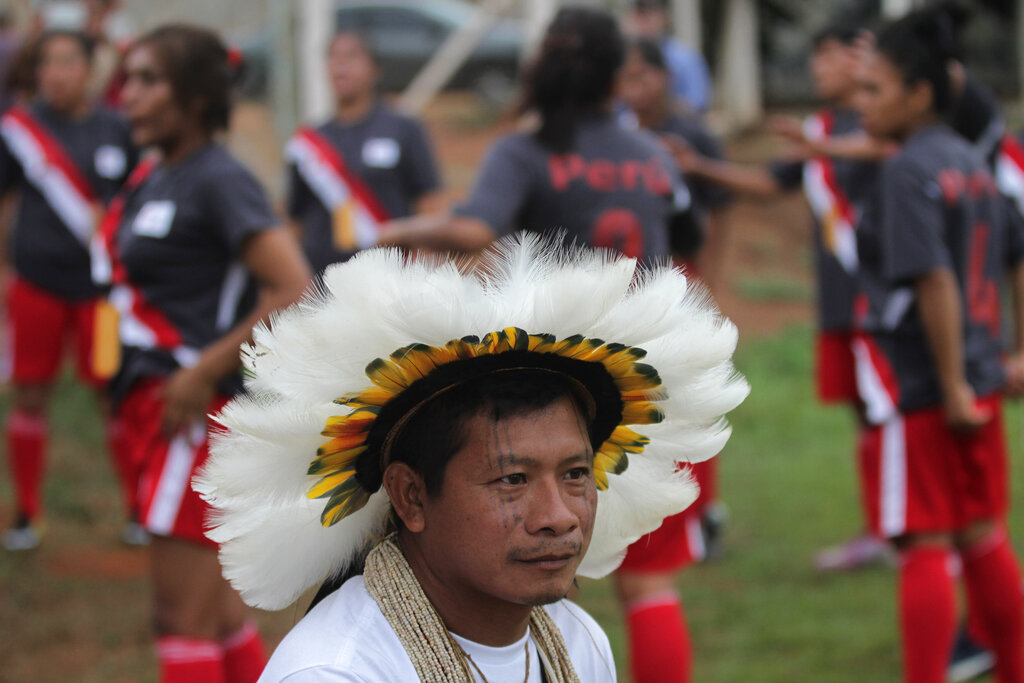
Only later, in 2017, was the Dom Ângelo ranch officially purchased by Cassio Gradela and his wife, Beatris.
The deforestation on the property is only 9 kilometers (less than 6 miles) from the Escondido Indigenous Territory. In Brazil, there are no rules prohibiting deforestation around Indigenous territories. For conservation units, another type of protected area, an additional protection strip can be defined by management plans, known as the buffer zones.
“The maintenance of ecological processes established in the protected area is threatened when there is no adequate management of the buffer zone,” says Louise Nakawaga, project coordinator at Boi na Linha, a program in partnership between MPF and Institute of Forest and Agricultural Management and Certification (Imaflora), a Brazilian NGO.
The investigation didn’t identify cattle transfers from Dom Ângelo to Sanga My, although the ranches are physically interconnected by other Gradela properties, such as the Santo Antônio and Pirapora ranches.
Beatris Tormena Fabris Gradela’s mother, Iolanda Tormena Fabris also declared a property on Brazil’s Rural Environmental Registry (CAR) in 2014, even though the area overlapped with a conservation unit. The CAR is a self-declaratory system created in 2012 to help monitor deforestation and land ownership, but has since been co-opted as a key land-grabbing tool in Brazil.
Juruena National Park, which lies north of the Escondido Indigenous Territory, has full protection status, meaning its area can only serve indirect land-use activities, such as scientific research and ecotourism. Even so, the family registered part of their Tucano Amarelo ranch within the park, eight years after it was established, giving them 834 hectares (2,061 acres) of overlap.
In response to the investigation, Cassio Roberto Gradela said there was “no authorship or participation” by himself or his wife in the illegal deforestation case at Dom Ângelo, and that “there was never, at any time, any cattle movement between it and the other farms.”
Regarding the Tucano Amarelo ranch, Gradela said the property had been acquired six years before the park’s creation, that he doesn’t conduct activities in the area, and that “the CAR registration was made because it is a legal obligation for all rural properties in national territory.”
Marfrig’s environmental compliance fails to filter out Molina’s suppliers
Marfrig claims in environmental compliance documents that it is more rigorous than Brazilian regulations when choosing its suppliers.
Among the requirements of its cattle purchasing policy are, for example, the supplier’s obligation to present a regularized CAR.
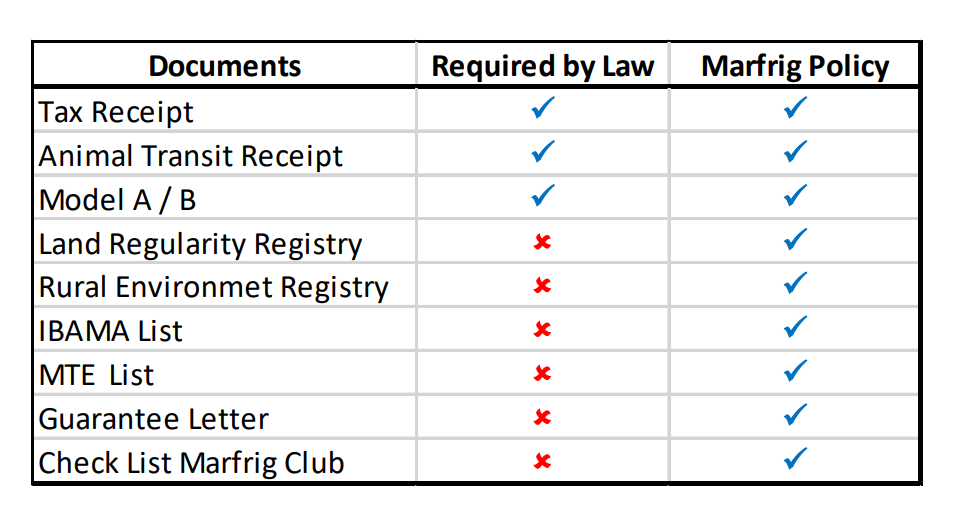
Despite declaring that it had verified these criteria for nearly 90% of its indirect suppliers in the Amazon, Marfrig somehow let through a rancher with six canceled or pending CARs due to environmental irregularities.
Walmor José Bianchi, his wife Nelivania Nunes dos Santos Bianchi and Fernando Rodrigo Bianchi own 13 ranches in the municipalities of Juína and Cotriguaçu, Mato Grosso, under the names of Monte da Vitória and Esperança. On some of them, Walmor raises cattle, which end up at Marfrig’s slaughterhouses via MFG feedlot.
In May 2024, the Bianchi family sent 720 head of cattle from the Monte da Vitória VII ranch to MFG’s Gera feedlot. Monte da Vitória VII has pending CAR issues for failing to show that the minimum 122 hectares (301 acres) of its total area is preserved — a requirement to maintain a threshold of native vegetation, known as the legal reserve under the Forest Code regulations for the Amazon region.
Walmor Bianchi currently faces trial in Mato Grosso State Court for unauthorized deforestation in several parts of the Esperança I, II and III ranches. He allegedly oversaw the clearing of 50 hectares (124 acres) of native vegetation between 2017 and 2021, and another 128 hectares (316 acres) in a legal reserve area, with an embargo in 2021.
From Esperança II, cattle are transferred to other Bianchi-owned ranches, such as Monte da Vitória VII, which sells to MFG. The investigation found no evidence, however, that cattle originating from Esperança were ultimately purchased with funds raised by Marfrig’s CRA issuance.
In 2024, Walmor Bianchi filed a writ of mandamus and succeeded in requesting the lifting of the embargo on the area, allowing him to resume commercial activities there.
Across the constellation of Monte da Vitória ranches, Bianchi is liable for 500 hectares (nearly 1,240 acres) of deforested legal reserve, which he must restore to regularize his CAR. Only after that would he have approval, according to Marfrig’s checklist, to supply cattle to the company.
Fernando Rodrigo Bianchi, the registered owner of some of the Monte da Vitória ranches, also owns a lumber company in Cotriguaçu. The company Global Madeiras has amassed a total of 893,800 reais ($162,509) in fines for environmental infractions, 95% of which stem from a single infraction.
The deforested areas at the Monte da Vitória ranches and the environmental infraction records of Fernando Bianchi’s lumber company didn’t prevent him from being honored by the Mato Gross timber producers’ and exporters’ association in July this year.
Walmor José Bianchi did not answer our questions for this investigation.
Cerrado cattle
Another threatened biome in Brazil also serves as pasture for the cattle that wind up at Marfrig’s slaughterhouses.
At least 109 hectares (269 acres) were deforested on properties belonging to rancher Sebastião Antônio de Carvalho located in Caiapônia municipality, in Goiás state, part of the Cerrado. The savanna is the world’s most biodiverse and serves as Brazil’s water tank, crucial for providing regular rainfall over other regions.
Carvalho is a supplier to two MFG feedlots: Mineiros and Pereira Barreto.
His Sobradinho ranch registered deforestation of 64 hectares (158 acres) of native vegetation after 2008. Of this, 38 hectares (94 acres) were destroyed shortly after Marfrig issued its first CRAs to purchase cattle from MFG, starting in October 2019.
From this area, Carvalho sent cattle to another of his properties, 37 km (23 mi) away in Jataí municipality. More than 1,100 head of cattle were sent between 2019 and June 2024 to the receiving ranch, called Torres Campos Eliseos Lug Pontal, which registered 45 hectares (111 acres) of deforestation since 2008, according to satellite image analysis conducted by CCCA.
In February 2019, cattle from the Pontal ranch were sent to MFG’s feedlot in Mineiros. In May 2020, another shipment of cattle left for the Pereira Barreto feedlot. Both are among MFG’s largest cattle-fattening facilities.
“The Pereira Barreto feedlot became too small here in São Paulo, we’ve been running full and full-time since January, with a waiting list for November and December,” an MFG general feedlot manager told the AgFeed industry publication in November 2024.
Four years earlier, at the same time Marfrig was starting to issue its bonds, Carvalho delivered at least 555 animals to MFG’s Pereira Barreto and Mineiros facilities. Carvalho rancher did not respond to our questions by the time this investigation was published.
European and Asian appetites fuel for deforestation beef
The long journey from ranches in the Amazon and Cerrado to MFG’s feedlots and on to Marfrig’s slaughterhouses is only part of the supply chain. The $1 billion that the meatpacker raised from selling CRA bonds to finance cattle purchases from MFG also allows it to export the meat across the Atlantic, to Belgium and the United Kingdom, from where it continues on to various Asian countries.
Among the Marfrig slaughterhouses that bought fattened cattle from MFG are the Tangará da Serra and Várzea Grande facilities, both in Mato Grosso.
The Várzea Grande unit previously belonged to Mato Grosso Bovinos SA, incorporated by Marfrig competitor Minerva Foods in 2017 and taken over in an asset swap in 2019. It was from this year onward, the same time Marfrig began issuing the bonds, that it shipped beef to the Netherlands.
The importer is Intervlees NV, a Belgian wholesaler focused on importing beef from South American countries and New Zealand. “We have a constant goods rotation of about 15.000 tn a year,” the company’s website states. “That means around 300 tn of meat arriving every week at Rotterdam’s port,” the largest in Europe and one of Marfrig’s entry points to the continent.
In 2023, Intervlees reached a total capital of 33 million euros ($36 million).
Based on export data, the investigation identified shipments of 103.3 metric tons of frozen beef from Marfrig’s Várzea Grande unit to Intervlees between September 2019 and May 2022.
As a wholesaler, Intervlees makes its profit selling the meat to other companies. According to export data made available by the Pulitzer Center, among them is Portuguese distributor Antonio N Nobrega Ii Ind & Comercio de Alimentos, which has a history of purchasing cattle from deforested Amazonian areas of Mato Grosso, as revealed in a 2020 Greenpeace investigation.
Since June 2023, EU-based exporters of Marfrig products, such as Intervlees, can no longer buy cattle and their derived products originating from deforestation. From December this year, the EU Deforestation Regulation (EUDR) will require geolocation of animal origin areas, including those where they were kept during rearing and fattening periods. Several Marfrig suppliers, in this case, would not meet the bloc’s rules.
A 2024 report produced by civil society organizations monitoring the livestock supply chain — Instituto do Homem e Meio Ambiente da Amazônia (Imazon), Instituto O Mundo Que Queremos and Radar Verde — indicates that the effectiveness of Marfrig’s zero-deforestation policy at its Várzea Grande slaughterhouse is “very low” for indirect suppliers.
“Annually, evaluating these companies, we notice that they cannot prove that they have control over the origin, because they need to reach the indirect [supplier],” says Camila Trigueiro, research analyst at Imazon and Radar Verde. “They don’t have control over their total supplier chain.”
The Marfrig slaughterhouse in Tangará da Serra, meanwhile, received at least 35,872 head of cattle between 2019 and 2024 directly from MFG’s Gera feedlot.
During this time, in October 2023, it exported a container with frozen boneless beef to GPS Food Group, the British wholesaler that sells mostly in Asian markets.
Its buyers there include Dalian Contico International Trading Co. in China and Century Pacific Food Inc. in the Philippines. The latter claims to have a supplier chain operations that “fully comply with all local environmental laws and regulations.”
Even though companies like Marfrig still do not present complete supply chain tracking, Trigueiro says European regulation is already moving companies in the industry to reduce socioenvironmental irregularities in their supply chains.
“Some states are already trying to mobilize, to be able to identify their cattle herds, to have this information, and then serve a market that is more demanding,” Trigueiro says, referring to the European Union. “There is no other market that has the socioenvironmental requirements that the EUDR is bringing.”
Marfrig recently indicated that China, another significant market, could potentially adopt environmental rules similar to EUDR.
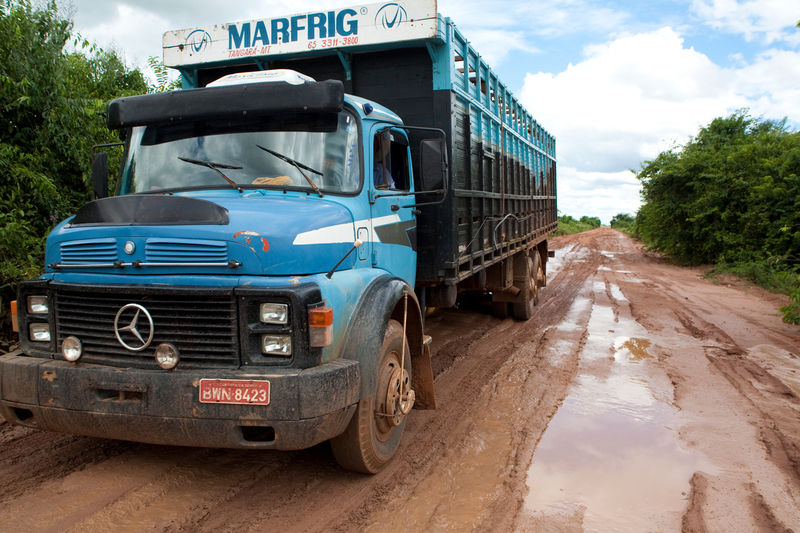
What buyers say
The investigation reached out to the various companies identified along the supply chain that brings beef from deforested land to markets in Europe and Asia.
MFG said in its response that the ranches of Cassio Roberto Gradela, Walmor José Bianchi and Sebastião Antônio de Carvalho, which supplied cattle to its feedlots, complied with all of its socioenvironmental criteria. When asked about Bianchi’s deforestation cases, MFG said it’s not within its obligation to check the status of its suppliers’ legal reserves.
Like MFG, Marfrig declared that the properties where the three ranchers raised cattle “completely met” its environmental and land criteria.
Neither company would comment on the deforestation cases involving their direct suppliers’ other farms. Cattle were sent from these areas to the final farm before being shipped to MFG’s feedlots.
Both MFG and Marfrig said Cassio Roberto Gradela is not listed among their suppliers. However, they confirmed purchasing cattle from the Gradela-owned Sanga My ranch. Our investigation revealed that the permits to move cattle from Sanga My to MFG were signed by Gradela’s wife, Beatris.
Sema-MT, the Mato Grosso state environmental agency, which is in charge of CAR registrations there, said there are no plans to restore cleared areas within the legal reserves on Walmor José Bianchi’s properties. This is because restoration only occurs after CAR validation, which has not yet occurred in the areas of Bianchi’s Monte da Vitória ranches.
None of the European meat wholesalers responded to our questions for this investigation.
Banner image: Illustration by Denise Matsumoto/O Joio e O Trigo.
Jelter Meers, from the Pulitzer Center, contributed data research for this story.
Now on Wall Street, JBS eyes growth amid scrutiny on deforestation & graft
New forest loss data beef up Amazon deforestation case against Casino Group
FEEDBACK: Use this form to send a message to the author of this post. If you want to post a public comment, you can do that at the bottom of the page.


